Chasing visible abs might look impressive, but true strength and stability come from within. Most people train for a six-pack, not realizing that it’s the deep core that holds everything literally together.
Your deep core muscles are responsible for stabilizing your spine, maintaining good posture, and preventing injury. In this article, you’ll learn what the deep core is (and how it differs from your abs), how to activate it properly, and the most effective deep core exercises to build strength from the inside out.

Read More: The 3D Core Workout – Why You Need More Than Just Crunches
What Is the Deep Core? (And How It’s Different from Abs)

To understand core vs abs, you need to know the anatomy first.
Deep Core Muscles Are:
- Transverse abdominis (TVA): the innermost layer of the abdomen, like a corset hugging your torso
- Pelvic Floor Muscles: holding up the bladder, bowel, and reproductive organs
- Diaphragm: the main breathing muscle, functioning together with the core
- Multifidus: tiny but effective stabilizers throughout the spine
Superficial Core Muscles (Your “Abs”):
- Rectus abdominis: the six-pack muscle
- External and Internal Obliques: assist with side bending and rotation
- Deep Core vs Surface Abs: While your surface muscles generate movement and appearance, your deep core governs internal pressure, stability, and posture. It is the basis for efficient and safe movement ranging from running to squatting or lifting a box.
Read More: Top 5 Pilates Balls for Core Strengthening and Rehabilitation
Why Strengthening the Deep Core Matters

A robust deep core does more than correct your posture—it supports your spine and boosts daily performance.
Advantages of deep core strengthening:
- Decreases Low Back Pain: Inadequate deep core muscles usually result in spinal instability and pain
- Makes Functional Movement Better: Daily activities are safer and more effective
- Increases Balance and Coordination: Crucial for athletes and older adults alike
- Supports Pelvic Floor Health: Particularly crucial after pregnancy or with age
- Increases Core Stability Training: Core stability is about resisting unwanted movement, not merely performing crunches
Consider core stability vs core strength as follows:
Stability is your capacity to manage movement. Strength is your capacity to produce force. You require both, but stability comes first.
How to Tell If Your Deep Core Is Weak
Wondering if your deep core needs attention? Here are some signs:
- Poor posture (forward head, rounded shoulders, slouched spine)
- Chronic low back pain or feelings of instability
- Abdominal “doming” during crunches, planks, or sit-ups (a sign your core isn’t engaging properly)
- Breath-holding or rib flaring when lifting or moving
- Pelvic floor symptoms like leaking or pressure
These red flags point to a disconnect between the deep core muscles and daily movement.
Step One: Learn to Activate Your Deep Core
Before we dive into transverse abdominis exercises, you have to understand how to activate your deep core properly.
1. Core Bracing Techniques
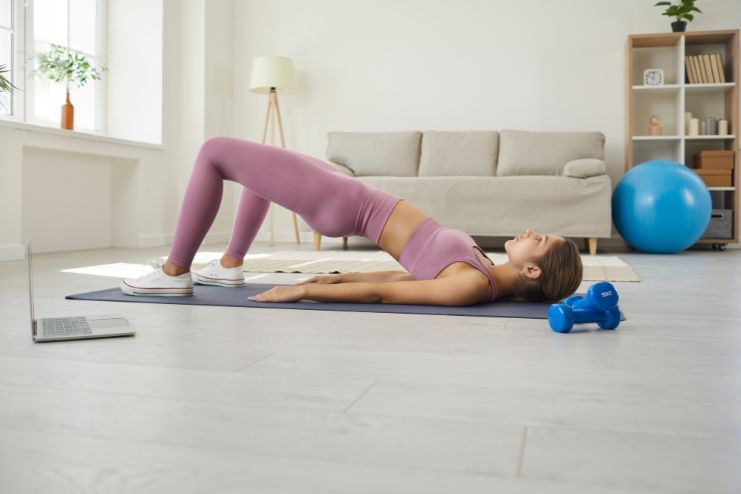
Bracing is tightening the core as if getting ready to take a punch—not sucking in. It’s subtle but strong. Here’s how you brace the core in the right way:
- Put your hands on your sides, just inside the hip bones.
- Breathe in through your nose, opening up your ribs.
- Breathe out and slowly pull the deep belly muscles in without crunching forward
2. Diaphragmatic Breathing
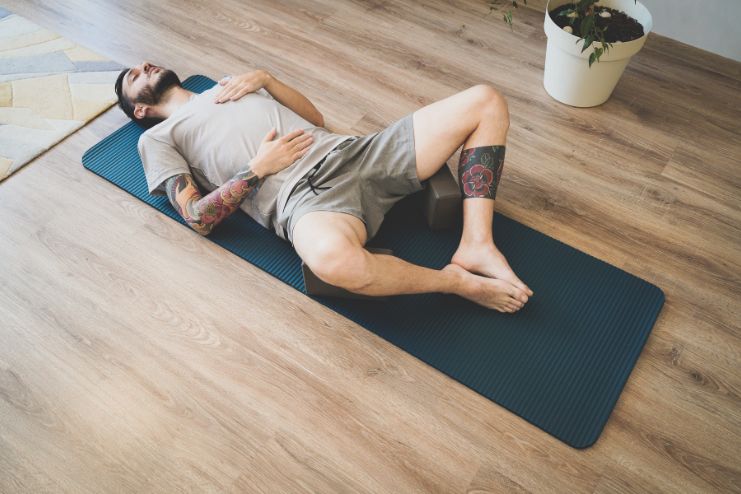
Your diaphragm is part of your core—you have it in sync with your TVA and pelvic floor. Here’s how you indulge in diaphragmatic breathing:
- Get on your back with bent knees.
- One hand on chest, one hand on belly.
- Breathe in through your nose so your belly (not your chest) will go up.
3. Pelvic Floor Engagement
Imagine gently lifting your pelvic floor muscles, like stopping the flow of urine. Avoid squeezing your glutes or inner thighs.
This inner core activation forms the foundation for all deep core work.
Read More: Tuesday Toning: Core-Focused Pilates Session
Top Exercises to Strengthen the Deep Core
Deep core exercises extend beyond crunches to develop inner strength, stability, and neuromuscular control. Every movement emphasizes quality over quantity—slow, controlled activation is crucial here. Here are the top exercises that’ll help you strengthen the deep core:
1. Dead Bug
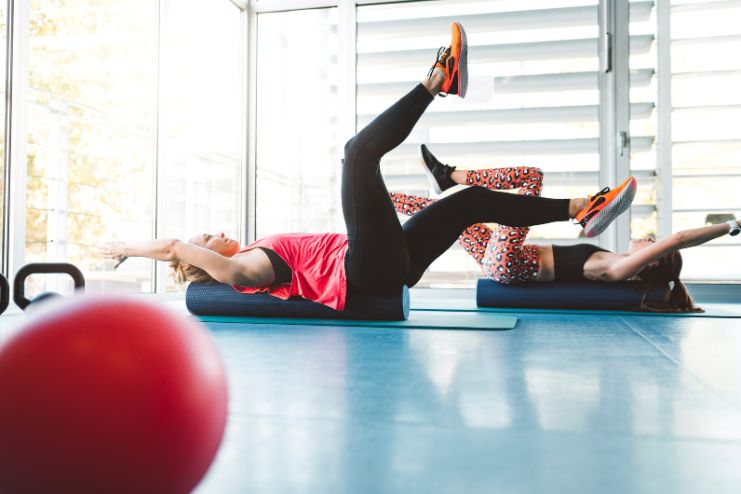
Purpose: The Dead Bug exercise promotes coordination, spinal stability, and helps your core remain active. All this while moving limbs, needed in everyday activities.
Muscles engaged: Transverse abdominis, multifidus, rectus abdominis (isometrically), and pelvic floor
How to do it:
- Lie on your back with arms out to the ceiling and knees bent at 90 degrees over your hips.
- Breathe in to set up. As you breathe out, slowly lower your right arm and left leg down toward the ground without allowing your lower back to arch.
- Come back to the beginning, then repeat on the other side.
- Keep your core engaged as if you’re tightening a corset around your waist.
Pro tip: If your lower back comes off the floor, decrease your range of motion or put a towel under your lower back for support.
2. Bird Dog
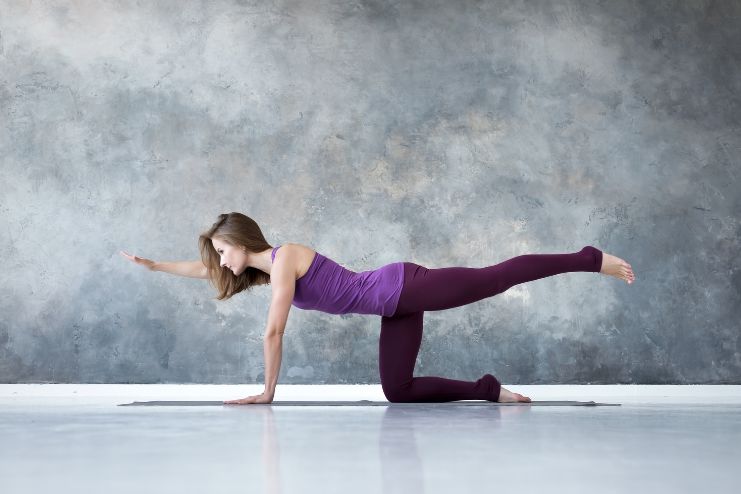
Purpose: The Bird Dog workout develops cross-body coordination and strengthens the core stabilizers that support the spine. It’s particularly beneficial in enhancing posture and lowering low back stress.
Muscles engaged: Multifidus, transverse abdominis, glutes, and spinal erectors
How to perform:
- Begin on hands and knees—shoulders over wrists, hips over knees.
- Engage your core, maintaining a neutral spine.
- Extend your right arm and left leg at the same time, going long without going too high.
- Hold, then return to the start and repeat on the opposite side.
- Don’t let your hips rotate or shift from side to side—picture holding a glass of water against your back.
Tip: Push your supporting hand and shin into the ground for added stability.
3. Glute Bridge with Core Engagement
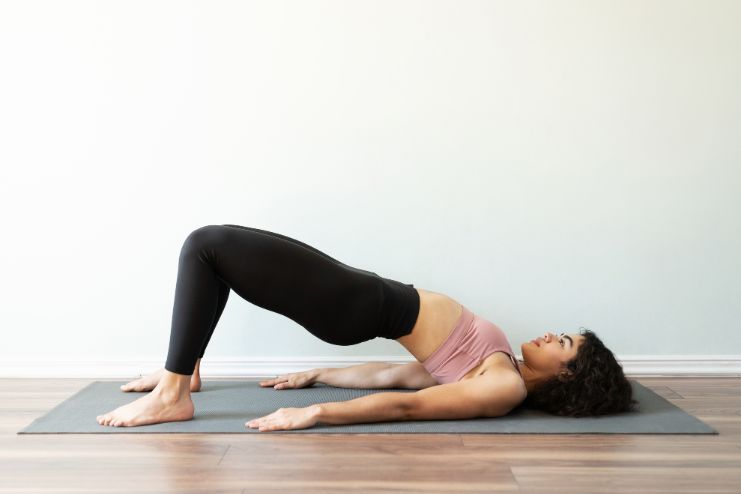
Purpose: When you do glute bridges, it activates your core as you engage your glutes. This is important for pelvic positioning and low-back wellness.
Muscles engaged: Glutes, transverse abdominis, pelvic floor, hamstrings
How to do it:
- Lie on your back with knees bent, feet hip-width apart, arms at your sides.
- Exhale and engage your core, squeezing your glutes to lift your hips toward the ceiling.
- Stop when your body creates a diagonal line from your shoulders to your knees—do not arch your lower back.
- Slowly lower with control.
Tip: Visualize zipping your ribs and hips together when lifting. This keeps the core tight throughout. Watch this video to learn how to do it right.

4. Pallof Press (Anti-Rotation Hold or Press)

Purpose: The Paloff Press exercise conditions the core to oppose rotation, develops stability and control against asymmetric load. This one is good for real-life activities, such as carrying groceries on one side.
Muscles engaged: Transverse abdominis, obliques, and multifidus
How to do it:
- Fix a resistance band at chest level. Stand side-on to the anchor point and grasp the band in both hands at your sternum.
- Step back to create tension, then press the band directly out in front of your chest.
- Hold for 3–5 seconds, fighting the rotation. Return to the start slowly.
- Repeat 8–12 repetitions per side.
Pro tip: Keep knees slightly bent and glutes engaged to stabilize your core from the ground up.
5. Heel Slides or Marches (Supine Core Activation)
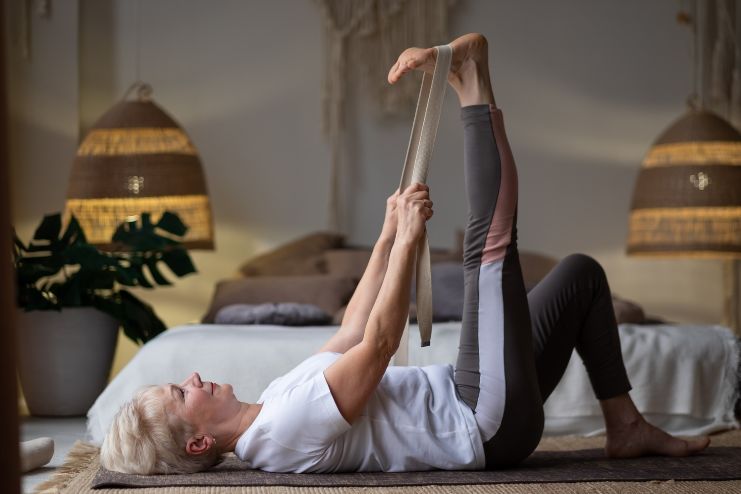
Purpose: The Heel slides or marches are easy-to-learn movements to teach deep core control without straining the spine. This exercise is particularly useful for postnatal rehabilitation or core retraining.
Muscles engaged: Transverse abdominis, and pelvic floor
How to do it:
- Lie on your back with knees bent, feet flat on the floor. Put your hands just inside your hip bones.
- Breathe in to set up. Breathe out and softly activate your lower belly—feel a gentle tension beneath your fingertips.
- Slide one heel out along the floor without allowing your pelvis to tip or ribs to flare.
- Return and repeat on the other side. You can advance this by marching one leg off the floor.
Pro tip: Move slowly—more concerned with stability than speed.
6. Wall Breathing/90-90 Breathing
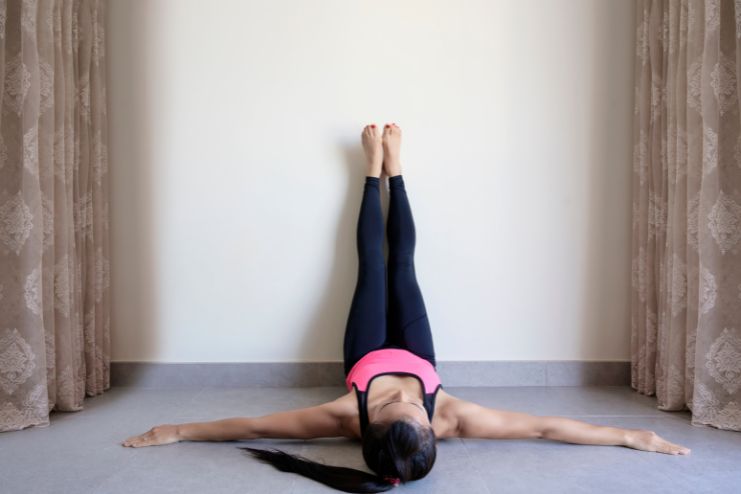
Purpose: Re-establishes optimal breathing mechanics and trains diaphragm, core, and pelvic floor to function in synchrony—a pre-requisite for all other exercises.
Muscles engaged: Diaphragm, transverse abdominis, and pelvic floor
How to do it:
- Lie on your back with feet flat against the wall, knees and hips in 90-degree position. Squeeze a small towel or block between the knees.
- Breathe in through your nose, feeling your ribs come out to the sides (not up).
- Exhale slowly through puffed-out lips, using your core as if fogging a mirror.
- Repeat for 5–8 breaths, with an emphasis on full exhalation.
Pro tip: You can put your hands around your lower ribs so you can feel them moving sideways—this helps with diaphragm breathing over shallow chest breathing.
Watch this video to know more.

Read More: Top 10 Best Core Sliders 2021
Avoid These Mistakes When Training Your Core
Common errors can derail your progress—even if you’re doing the right moves. Here are a few you can avoid:
- Only training surface muscles (e.g., crunches, leg raises)
- Rib flaring or arching the back during exercises
- Breath-holding instead of controlled exhalation
- Skipping posture correction throughout the day
- Overtraining your obliques without first stabilizing your spine
These issues often reinforce compensation patterns and bypass the deep core.
Programming Tips: How Often to Train Your Deep Core
Consistency trumps intensity in deep core work.
- Practice 5–10 minutes of activation (breathing, bracing, posture work) every day.
- Targeted sessions, 2-3 times a week, with exercises such as dead bugs, bird dogs, and Pallof presses.
- Pair it with mobility and glute training. This enhances pelvic alignment and doubles your outcome.
- You can include it in your warm-ups or even post-exercise cool-downs. It doesn’t have to be a separate workout every time.
Deep core training is best understood as neuromuscular learning, rather than mere strength development.
Final Thoughts
Strength doesn’t necessarily manifest as a six-pack. The strongest muscle of your core is the one nobody sees.
By learning to strengthen your deep core, you’re investing in lifelong function—improved posture, less pain, and wiser movement. Whether you’re an athlete, a new parent, or simply sick of slouching, your deep core is worth more attention.
Begin small. Be steady. And recall: true strength originates from the inside out.
References
- https://www.racmn.com/blog/core-strength-and-how-to-brace-your-core
- https://www.laurajawad.com/post/heel-slide-exercise-progressions-variations/
- https://www.menshealth.com/fitness/a30199046/pallof-press-exercise/
- https://www.youtube.com/watch?v=_leI4qFfPVw&t=1
- https://www.acefitness.org/resources/everyone/exercise-library/14/bird-dog/
In this Article

















